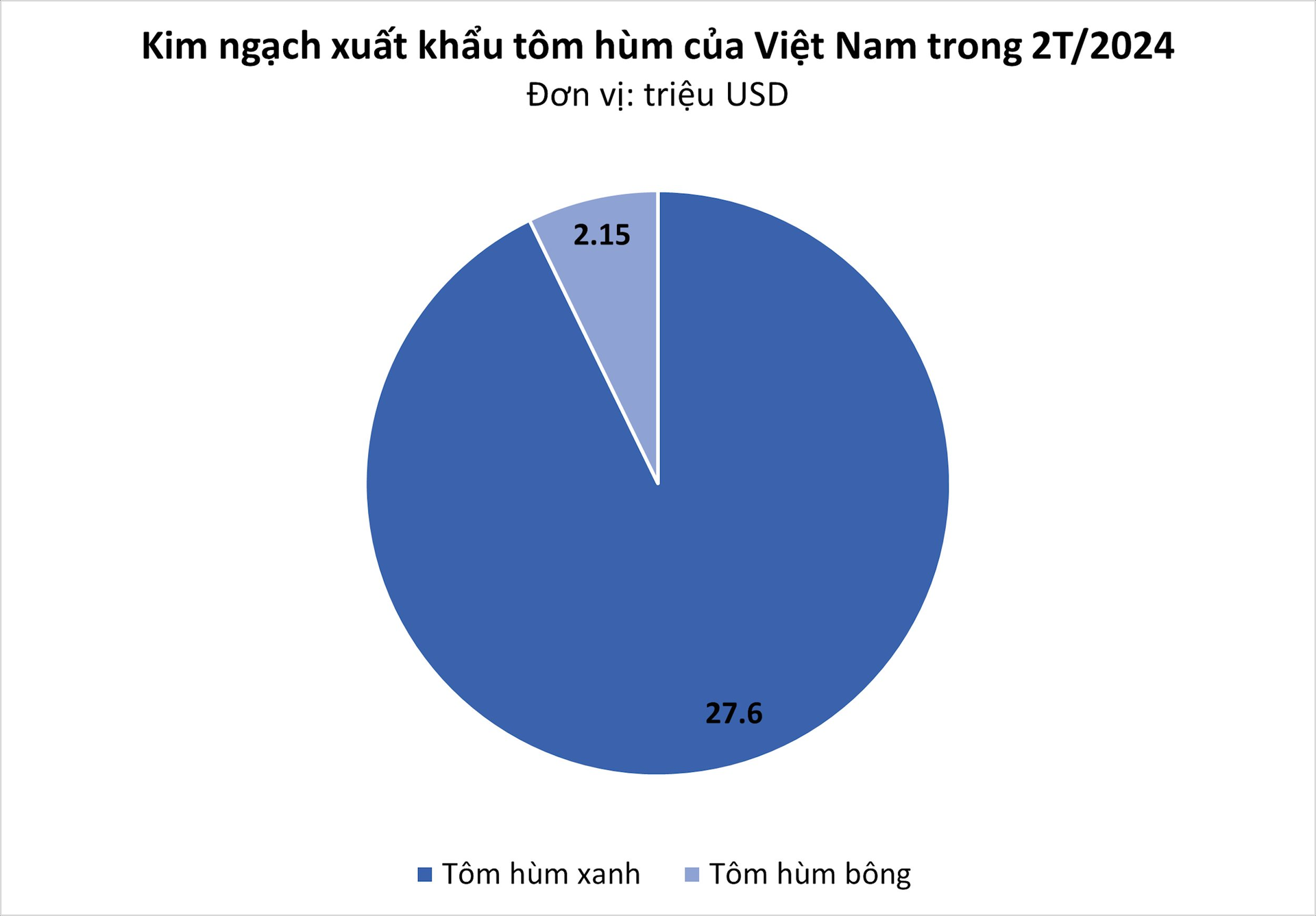According to information from the Vietnam Association of Seafood Producers and Exporters (VASEP), in the first two months of 2024, Vietnam’s seafood exports have increased by 13% compared to the same period last year.
Several main items have achieved positive growth in the past 2 months, with white leg shrimp increasing by 18%, tuna by 21%, catfish by 6.5%, and black tiger shrimp by 9%. Especially, the export of lobster has soared 18 times compared to the same period last year.
As of the end of February 2024, lobster exports reached nearly 30 million USD, an increase of 1,746% compared to the level of 1.6 million USD in the same period last year. Of this, green lobster (rock lobster) accounted for over 90% with 27.6 million USD, increasing 80 times, followed by spiny lobster with 2.15 million USD, increasing 45 times compared to the same period.
China is still the largest importing market for Vietnam’s lobster products, with a value of nearly 29 million USD, 27 times higher than the same period last year. Currently, Vietnam has 46 packaging facilities exporting lobster to this market.
However, since October 2023, China has stopped importing Vietnamese spiny lobsters, due to regulations related to its Wildlife Protection Law.
According to the regulations, in order to export spiny lobsters to China, businesses must prove that breeding lobsters are not directly caught from the sea, prove the clear breeding process, and not use naturally harvested breeding stock; the importing unit must have a permit…

In addition to China, Vietnam also exports green lobsters and spiny lobsters to Thailand, Malaysia, and Singapore, and exports land lobsters to the US.
Lobster is a high-value farming object, bringing in large incomes for people in the provinces of South Central Coast, especially Khanh Hoa and Phu Yen. Khanh Hoa is the largest lobster farming and exporting locality in the country. Currently, this locality has established 3 linkages between farmers and mainstream lobster purchasing and exporting businesses.
In the domestic market, spiny lobsters weighing from 0.9 – 2.5kg are sold for about 1.9 – 3.3 million VND/kg.
In 2023, Indonesia, Thailand, and Vietnam accounted for about 6.8% of China’s spiny lobster import market share, doubling the figure in 2019. Besides the effect of the seafood import ban from Japan, this increased market share also comes from China’s closer ties with neighboring Southeast Asian countries to reduce the impact of political tensions with the West.
China is also exploring options to domestically farm various lobster species to meet domestic demand. Since 2019, the country has started to farm spiny lobsters (an Australian species) in the autonomous region of Xinjiang with the construction of breeding ponds with a seawater-like environment. Eastern European lobster species farmed in Xinjiang have also been transferred to Zhejiang and Jiangsu for breeding purposes.




![[Photo Essay]: Experts, Managers, and Businesses Unite to Forge a Path Towards Sustainable Green Industry](https://xe.today/wp-content/uploads/2025/07/z678592918-150x150.jpg)


![[Photo Essay]: Experts, Managers, and Businesses Unite to Forge a Path Towards Sustainable Green Industry](https://xe.today/wp-content/uploads/2025/07/z678592918-100x70.jpg)




